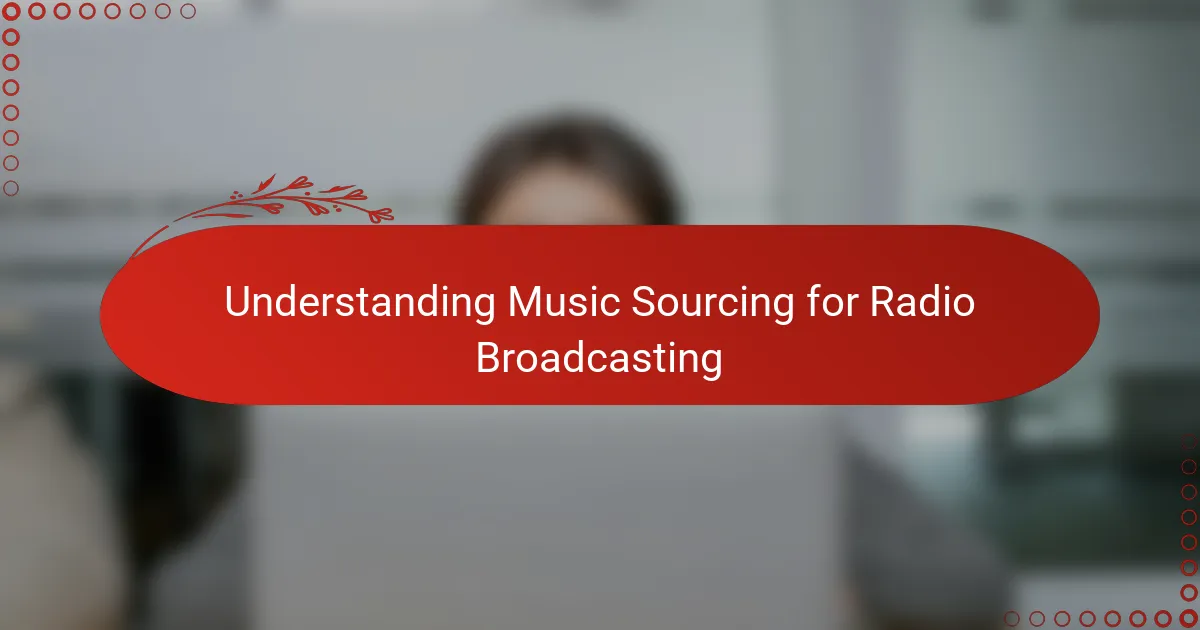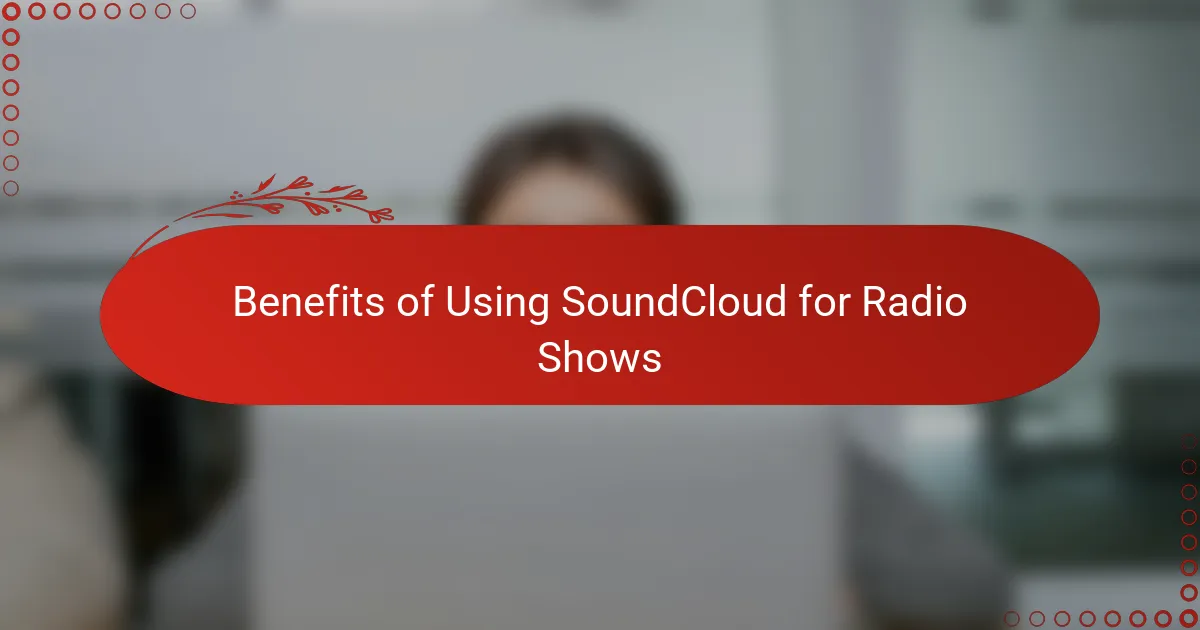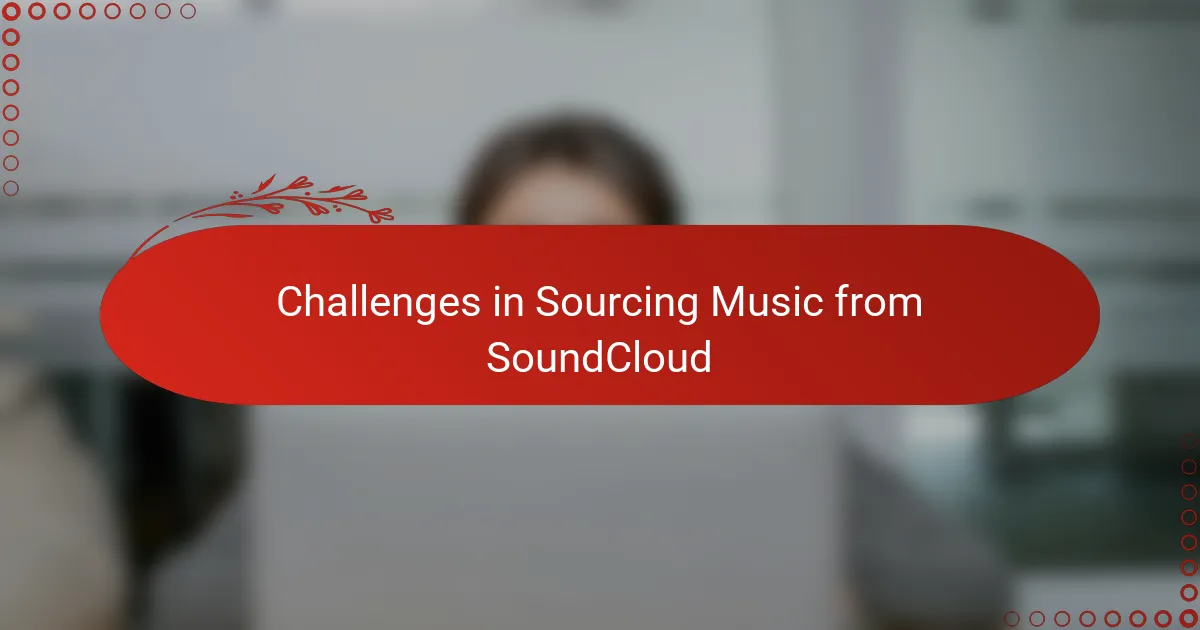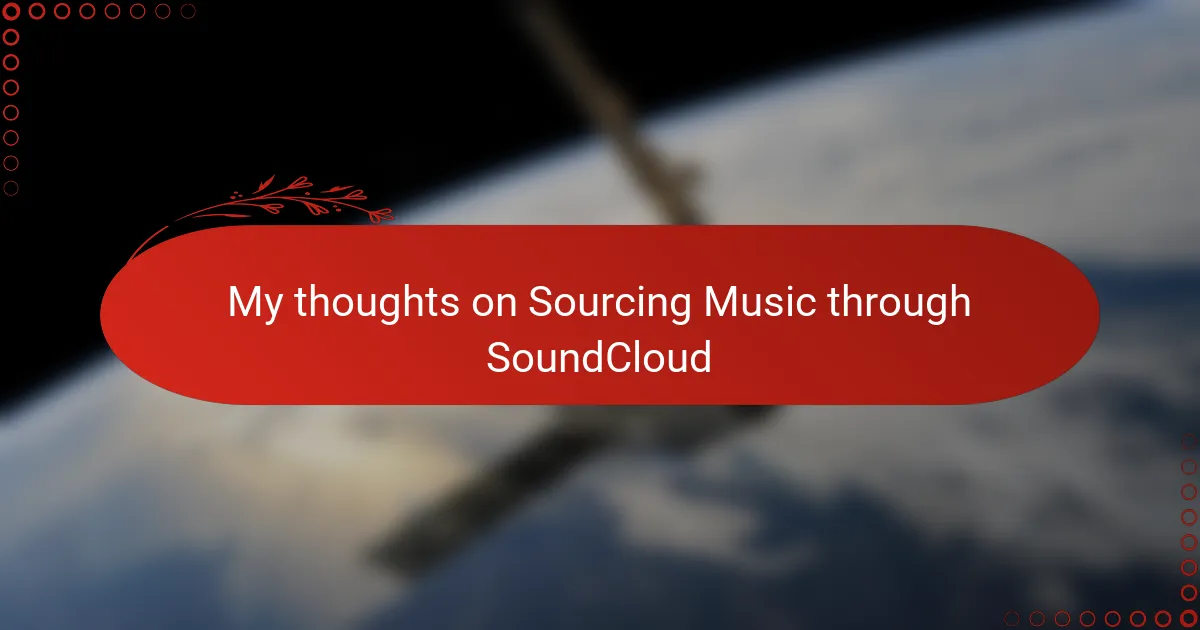Key takeaways
- Effective music sourcing in radio requires thoughtful curation to resonate with the audience and enhance the listening experience.
- SoundCloud is a valuable platform for discovering diverse, independent tracks that can refresh radio playlists and engage listeners.
- Challenges include navigating licensing issues and filtering through varying production quality, necessitating careful selection of tracks.
- Building relationships with artists and using advanced search filters can improve the efficiency and quality of music sourcing on SoundCloud.

Understanding Music Sourcing for Radio Broadcasting
When I first started working in radio broadcasting, I quickly realized that sourcing the right music is more than just picking popular tracks. It’s about finding songs that resonate with your audience and fit the station’s vibe. Have you ever wondered why some playlists just feel “right”? That’s because thoughtful curation behind the scenes shapes the entire listening experience.
Music sourcing isn’t just a technical step; it’s an art form where timing, licensing, and fresh content all come into play. I’ve faced moments where I had to balance between playing familiar hits and introducing new sounds without losing listener interest. It can be a delicate dance, but that challenge is what makes this aspect so rewarding.
Ultimately, understanding where your music comes from—and how it aligns with your station’s identity—defines your broadcast’s success. Don’t you think that the perfect song at the perfect moment can create a connection that keeps listeners coming back? That connection is the heart of radio, and sourcing is the pulse behind it.

Overview of SoundCloud as a Music Platform
SoundCloud stands out to me as an incredibly dynamic music platform, especially for someone in radio broadcasting. Its appeal lies in the massive variety of tracks uploaded daily by independent artists and producers from around the world. I remember exploring SoundCloud and feeling like I had stumbled upon a treasure trove of fresh sounds I hadn’t heard anywhere else.
What really strikes me about SoundCloud is its community-driven nature. Unlike traditional platforms, it’s not just about listening; you can engage directly with artists through comments and reposts, which adds a level of connection that feels rare. Have you ever found a hidden gem on SoundCloud and felt like you discovered a secret before it became mainstream? That’s the kind of experience that keeps me coming back.
From a practical standpoint, SoundCloud’s ease of use and the ability to search through genres, moods, and even tags helps me quickly identify tracks that might fit specific segments on air. It’s this blend of accessibility and diversity that makes SoundCloud a go-to for sourcing music that can surprise and engage my listeners.

Benefits of Using SoundCloud for Radio Shows
One of the biggest benefits I’ve found using SoundCloud for radio shows is the sheer diversity of music available. It’s not just mainstream hits; it’s a hub for underground artists and niche genres that can give your broadcast a unique edge. Have you ever felt stuck playing the same tracks over and over? SoundCloud breaks that cycle and injects fresh energy into your playlist.
Another advantage that stands out is how easily I can connect with emerging artists. Through SoundCloud’s messaging and comment features, I’ve discovered talents who are eager to share exclusive tracks or remixes. This direct line to creators adds a personal touch to my shows, making the music feel more vibrant and current.
I also appreciate how SoundCloud’s tagging and search functions help me tailor content quickly. Whether I’m looking for something mellow to close out an evening segment or an upbeat track to kickstart a morning show, filtering through moods and genres saves me time. This efficiency means more creativity in curating rather than hunting, which every broadcaster can appreciate.

Challenges in Sourcing Music from SoundCloud
Sometimes, I’ve found that the sheer volume of tracks on SoundCloud can be overwhelming. With so many uploads from independent artists, it’s easy to get lost in the noise and struggle to identify quality content that truly fits a show’s vibe. Have you ever spent hours sifting through songs only to wonder if any will really resonate with your audience?
Another challenge I often face is the murky water of licensing and permissions on SoundCloud. Unlike major labels, many independent artists don’t always have clear rights or metadata attached to their tracks, which puts me in a tricky spot when considering what I can legally air. It makes me cautious—after all, no broadcaster wants to be caught playing unauthorized music.
Lastly, I sometimes worry about the inconsistency in production quality. While SoundCloud is a goldmine for fresh sounds, not every track meets the audio standards required for broadcast. This means additional time spent filtering out songs that don’t have the polish needed to sound professional on air. Isn’t it frustrating to find a great song but then realize it just won’t work technically?

Strategies for Finding Quality Tracks on SoundCloud
Navigating SoundCloud for quality tracks often starts with following curators and tastemakers whose playlists align with your station’s style. I remember when I stumbled upon a DJ who specialized in deep house mixes—once I followed their profile, I found an endless stream of gems that fit perfectly into my late-night slots. Have you tried leaning on trusted creators rather than random scrolling? It really narrows down the noise and boosts your chances of finding consistent quality.
Another strategy I rely on is using SoundCloud’s advanced filters, especially tags and genres. By zeroing in on moods like “chill,” “energetic,” or “ambient,” I tailor my searches to exactly what the segment calls for. It’s saved me countless hours and sparked new ideas, like when I needed an upbeat track for a morning show and found one through a carefully chosen mood tag that instantly lifted the broadcast’s energy.
Lastly, engaging directly with artists through comments or messages can be surprisingly fruitful. I’ve reached out to producers asking about permissions or even exclusive mixes, which not only secured fresh content but built relationships that enriched future sourcing. Doesn’t that personal connection make the music feel more alive on air? In my experience, those exchanges turn sourcing into a collaboration rather than just a simple download.

Integrating SoundCloud Music into Radio Programming
Integrating SoundCloud music into radio programming has been an eye-opening process for me. I often find that the platform’s vast, eclectic library allows me to infuse my shows with sounds that break the usual mold, giving listeners unexpected moments to enjoy. Have you ever been caught off guard by a track you never heard before, but somehow it fits the mood perfectly? That sense of discovery keeps the broadcast fresh and exciting.
From a practical side, syncing SoundCloud tracks with my show’s flow requires thoughtful selection—not every song works within the timing or energy levels of a segment. I remember one evening when I tested a couple of indie electronic tracks from SoundCloud during a late-night slot, and the response was surprisingly positive. It affirmed how a bit of experimentation with these underground tracks can elevate the programming.
However, integrating SoundCloud also means being vigilant about licensing and sound quality. In my experience, ensuring the proper rights and vetting tracks for broadcast-ready audio takes extra time, but it’s a necessary step to maintain professionalism. Balancing these factors isn’t always simple, but it’s rewarding to bring unique sounds to my audience responsibly.
